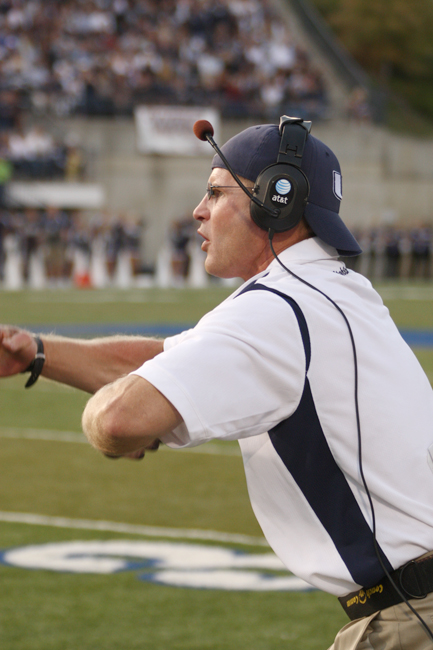What goes on in the headsets
Offense
1. Play calling on the offensive side of the ball starts in a booth up in the press box above Romney Stadium, where offensive coordinator Darrell Dickey resides during games.
Dickey calls the offensive plays and sends them through the headset down to head coach Brent Guy.
2. Guy said his first task upon receiving the play call is to organize what personnel will be substituted onto the field for that particular play.
The play call itself can be made in two different ways.
The first of those two is a series of three signals relayed onto the field. The first signal is the formation in which the offense will line up. The second indicates the motion or shift to be done before the ball is snapped. The third is the actual play to be run.
The other method of relaying the play call to the huddle on the field is by simply holding up numbers for the quarterback to see while in the huddle. The quarterback wears a wristband containing a sheet of paper that Guy said will have at least 40 plays printed on it. The quarterback finds the play corresponding to the number relayed to him from the sideline and makes that play call in the huddle. The plays on those cards change on a game-to-game basis to include plays that will be more prevalent in that week’s game plan.
As for Guy’s executive authority to veto a play call if he doesn’t agree with it, he said that he’ll generally only change the call when a decision is needed on a possible fourth-down attempt, kicking or punting situations and occasionally if a trick play is to be called.
Defense
1. On defense, the play calls go straight from the sideline to the defensive players on the field.
Defensive coordinator Mark Johnson sends in signals to the defense out on the field as their primary means of calling plays.
Much like the offensive play calls, the defense uses a set of hand signals to get the defensive play to the field.
Defensive line coach Danilo Robinson said the meaning of the hand signals are changed throughout the course of the season to avoid the possibility of opposing teams catching on to what certain signals indicate.
2. Similar to the offense, the defense also uses a set of defensive plays printed on wristbands.
While the offense only has one wristband on the field at all times, every player on the defensive side of the ball wears a wristband. Robinson said the main purpose for these is for situations where the opposing team is running a two-minute offense.
Under those pressure situations, the coaches will rely primarily on calling out number that every player on the defense can immediately reference on his wristband and line up accordingly.
“Anything we can do to speed up that communication from the sideline to the field is what we try to do,” Robinson said.
–matt.sonn@aggiemail.usu.edu
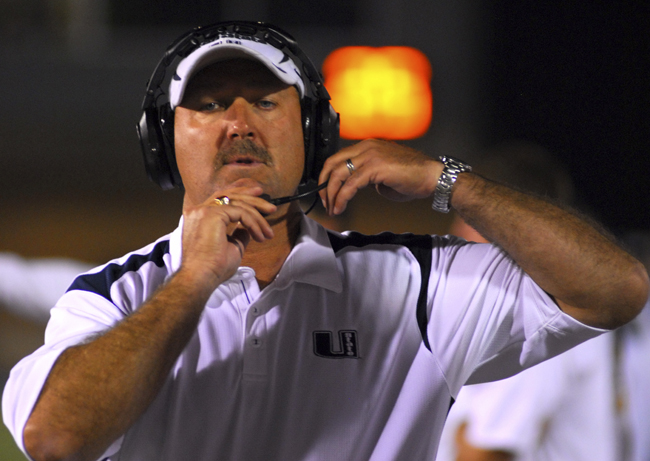
Head coach Brent Guy communicates on the sideline during USU’s loss to BYU. (Patrick Oden)
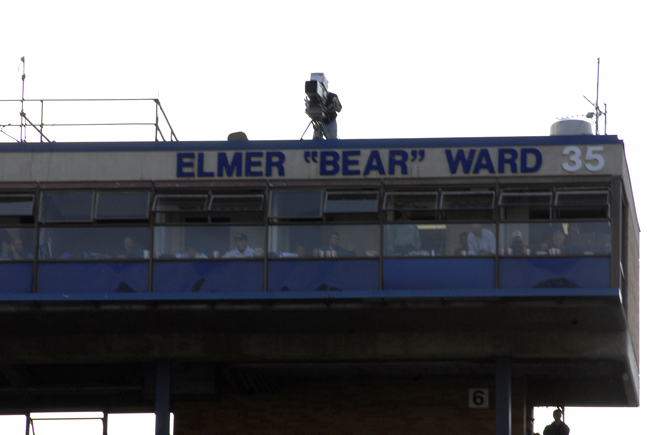
The press box at Romney Stadium is where USU offensive coordinator Darrell Dickey sits during games. (Patrick Oden)
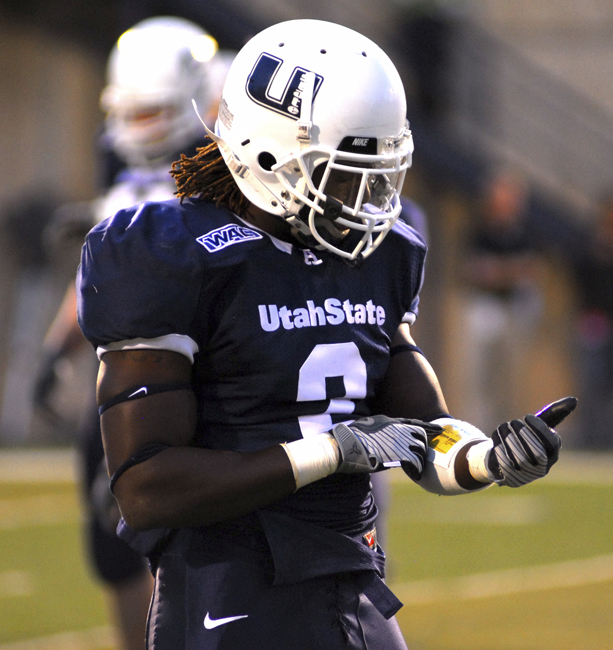
USU senior cornerback Roy Hurst checks his wristband for the play call against BYU. (Patrick Oden)
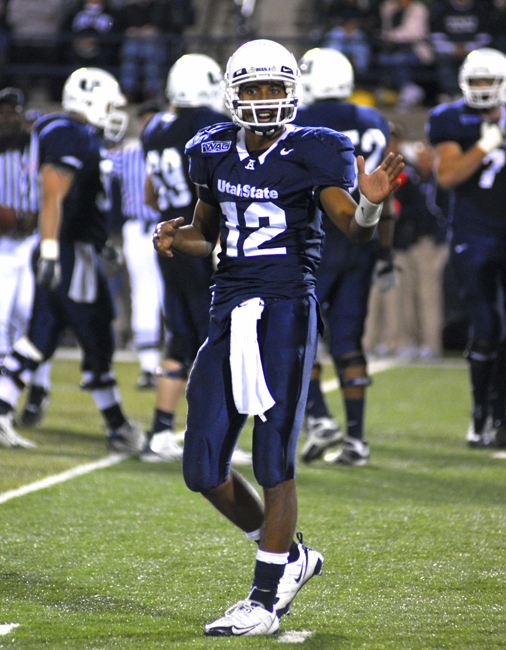
Sophomore quarterback Diondre Borel looks to the sideline for the play call against BYU. (Patrick Oden)

